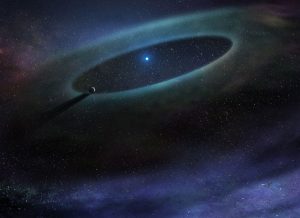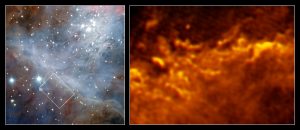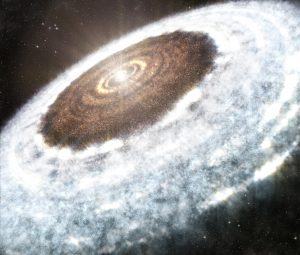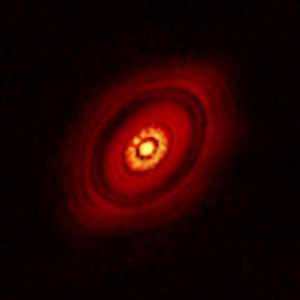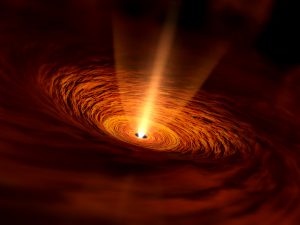ALMA finds gas-rich disks in unexpected places.
Image Highlight: ALMA Explores Orion’s Turbulent Border
ALMA sees transition from atomic to molecular gas in Orion.
Stellar Outburst Brings Water Snowline into View
Young star’s outburst provides first-ever view of a water snowline.
Gravitational Wave Search Provides Insights into Galaxy Evolution and Mergers
NANOGrav provides insights into galaxy mergers.
VLA Shows Earliest Stages of Planet Formation
New images of a young star made with the Karl G. Jansky Very Large Array (VLA) reveal what scientists think may be the very earliest stages in the formation of planets.
ALMA Spots Baby Star’s Growing Blanket
ALMA distinguishes between protostar disk and infalling gas.






